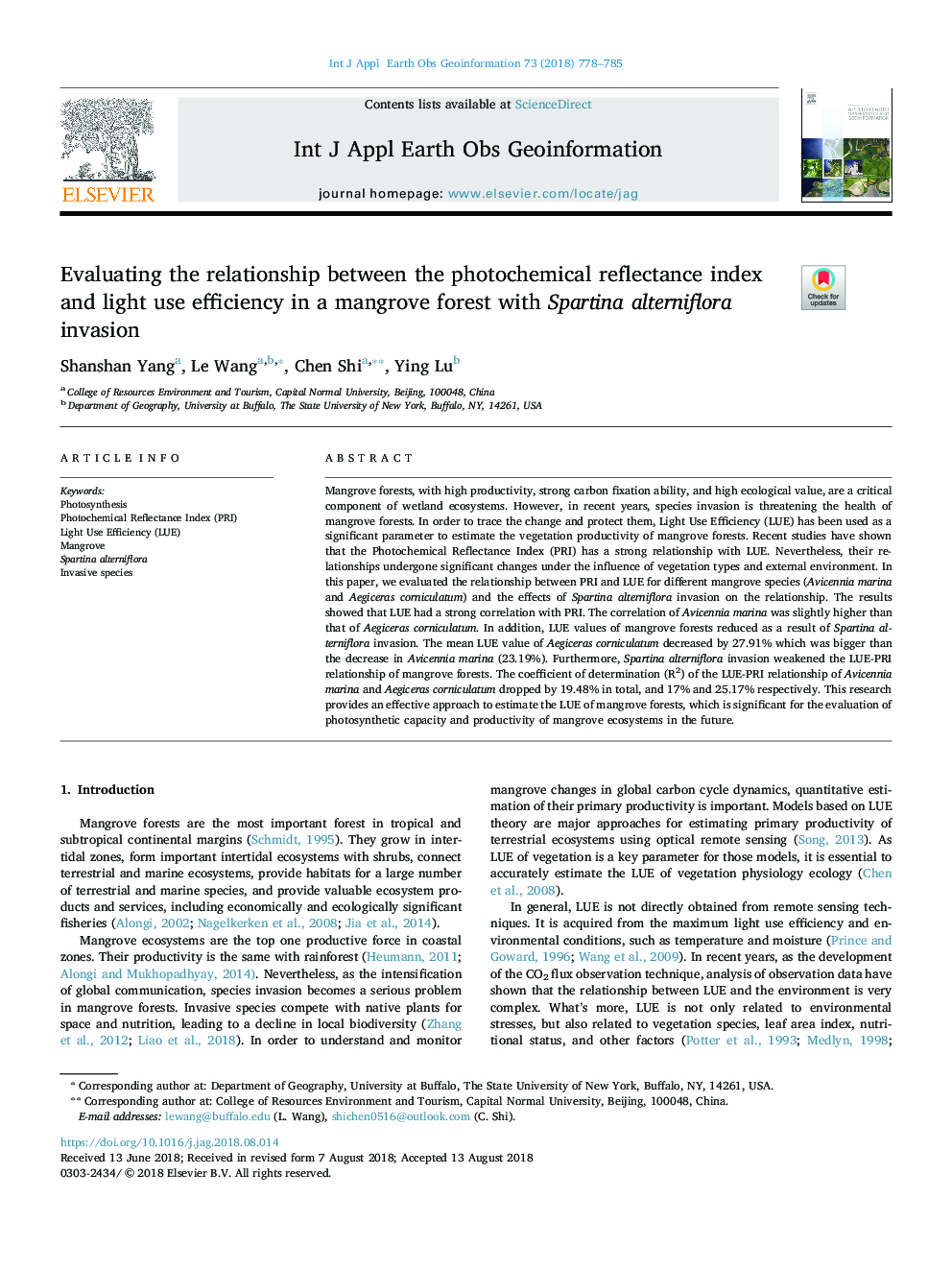| Article ID | Journal | Published Year | Pages | File Type |
|---|---|---|---|---|
| 10115592 | International Journal of Applied Earth Observation and Geoinformation | 2018 | 8 Pages |
Abstract
Mangrove forests, with high productivity, strong carbon fixation ability, and high ecological value, are a critical component of wetland ecosystems. However, in recent years, species invasion is threatening the health of mangrove forests. In order to trace the change and protect them, Light Use Efficiency (LUE) has been used as a significant parameter to estimate the vegetation productivity of mangrove forests. Recent studies have shown that the Photochemical Reflectance Index (PRI) has a strong relationship with LUE. Nevertheless, their relationships undergone significant changes under the influence of vegetation types and external environment. In this paper, we evaluated the relationship between PRI and LUE for different mangrove species (Avicennia marina and Aegiceras corniculatum) and the effects of Spartina alterniflora invasion on the relationship. The results showed that LUE had a strong correlation with PRI. The correlation of Avicennia marina was slightly higher than that of Aegiceras corniculatum. In addition, LUE values of mangrove forests reduced as a result of Spartina alterniflora invasion. The mean LUE value of Aegiceras corniculatum decreased by 27.91% which was bigger than the decrease in Avicennia marina (23.19%). Furthermore, Spartina alterniflora invasion weakened the LUE-PRI relationship of mangrove forests. The coefficient of determination (R2) of the LUE-PRI relationship of Avicennia marina and Aegiceras corniculatum dropped by 19.48% in total, and 17% and 25.17% respectively. This research provides an effective approach to estimate the LUE of mangrove forests, which is significant for the evaluation of photosynthetic capacity and productivity of mangrove ecosystems in the future.
Keywords
Related Topics
Physical Sciences and Engineering
Earth and Planetary Sciences
Computers in Earth Sciences
Authors
Shanshan Yang, Le Wang, Chen Shi, Ying Lu,
